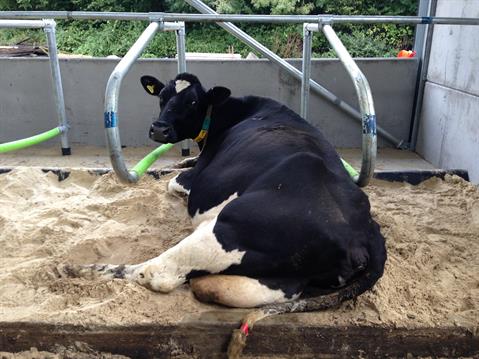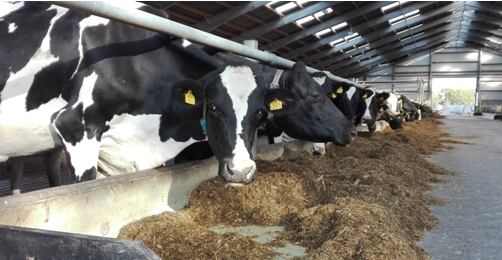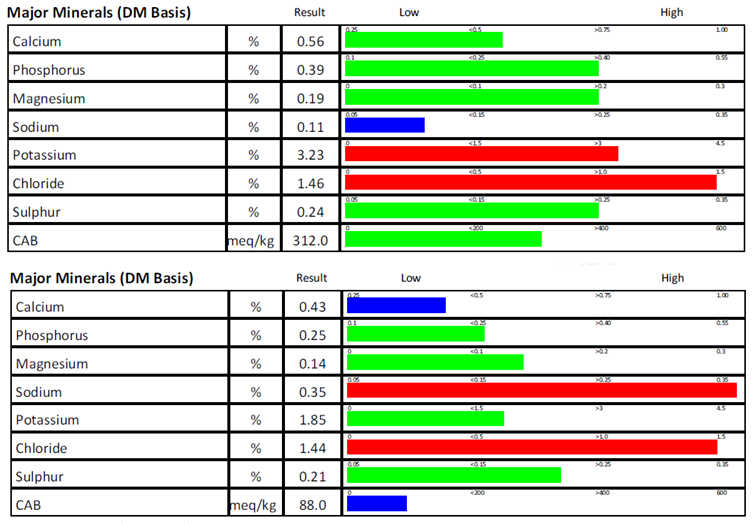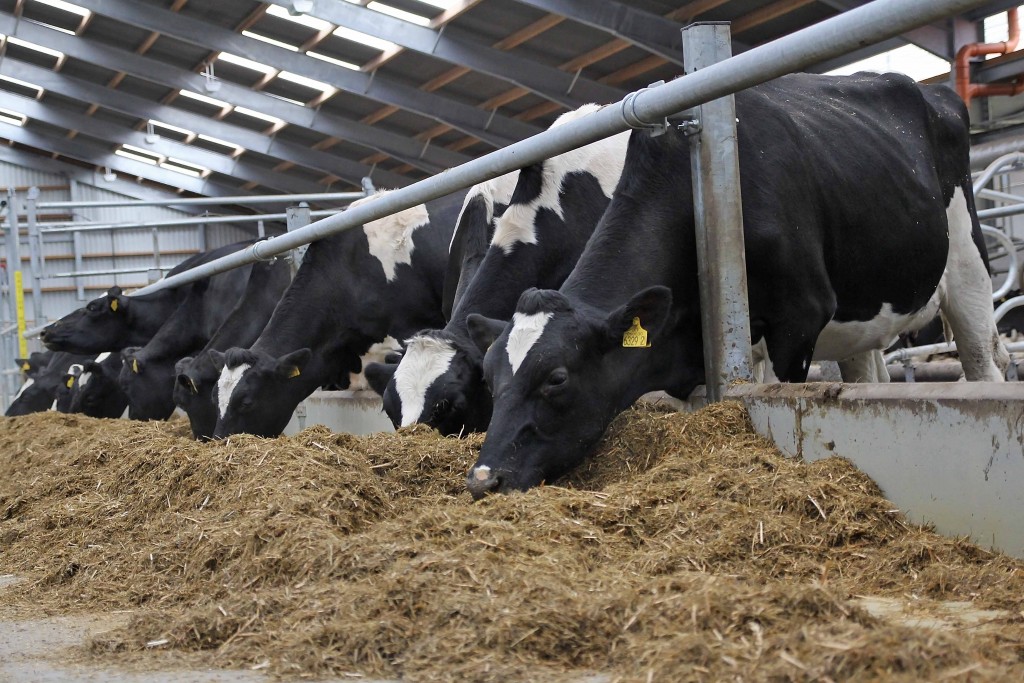By David Dunlop, Nutritionist at Chestnutt Animal Feeds
The dry period is not a rest, but a crucial stage of development in preparation for the subsequent lactation. Thinking about a cow’s nutrition after she has calved, is like starting to dig a well when you’re thirsty!
Correct management during late lactation, the dry period and the first few weeks post partum is critical to lactation performance and herd health.It is
this period that will allow a cow to express her full potential. Timely and careful planning is required.
Poor dry and transition cow management will:
- Reduce milk yield
- Increase metabolic health problems
- Reduce conception rates
- Have a negative effect of PROFITABILITY!
Condition is King
Before you turn your attention to drying off, emphasis should be placed on the condition of your late lactation cows. Taking steps to ensure cows are dried
off at the optimum body condition score of 3.0, is essential for successful dry cow management. A variety of fat and thin cows in the dry cow group
can lead to significant economic losses during early lactation; with an increase in metabolic diseases and poor production. The dry period should be
used to maintain body condition and not alter it. Any alterations to condition should be targeted in the late lactation period, so that the dry group
are as evenly conditioned as possible.We recommend that cows should be assessed at least 8 weeks before drying off, and their feed altered accordingly.
Feeding cows an additional 2kg of feed (above their production requirements) for an 8 week period, it should be possible to increase body condition by 0.5 if she is otherwise healthy.
Involve the Vet
The dry period presents an opportunity to deal with any underlying health challenges, without having the risk of impacting production or the constraints
of milk withdrawal. It is essential that you consult your vet and have a targeted treatment plan for the dry period. Every farm will have specific
challenges, but the main points to consider will be:
- Dry cow therapy
- Vaccinations
- Worms / Fluke / Rumen Fluke
- Lameness – Trim and regularly footbath the dry cows
- Risk Management for susceptible cows – eg. over fat cows, twin bearing cows
Importance of the Environment
Although often overlooked, space and the environment can be a massive limiting factor in transition cow management. Overstocking and neglecting dry cow
accommodation is one of the most common cardinal sins on many dairy farms.
Cubicles
Keep in the forefront of your mind that the dry cow is heavily pregnant, and these cows are at their biggest physical size in their lactation cycle; for
this reason they should have a clean, comfortable cubicle to lie on. Having 10% extra cubicles available to dry cows, is ideal. Ensure cubicles are
of sufficient size and in no way obstruct or injure the cow as she lies.

Water
Ensure the calving area has supply of clean water, as a fresh calved cow can drink 20 – 40 litres of water directly after calving. Too often the calving
area will have a small drinking bowl of insufficient size and flow to meet these needs. Use troughs that are easy to clean, such as tipping troughs
and ensure they are placed in an area with no obstructions.
Feed Space / presentation
As a dry cow gets closer to calving, her rumen is under increasing pressure from a rapidly developing calf, therefore she needs to be able to eat as and
when she chooses. Dry cow accommodation should allow all cows to feed at any one time, and they should be fed fresh, palatable feed daily.
Nutrition is Key
Correct dry cow nutrition, and management should ensure the majority of cows will calve, and move into the milking herd with minimal stress. Any complications
at the time of calving such as milk fever, retained placenta, displaced abomasums or ketosis, will almost always have a knock on effect on production
and fertility.
Far Off Dry Cow
Drying off in the target body condition score of 3.0, allows the far off dry cow to maintain condition on a silage of average quality, or good silage and
straw. However, this year with the good grass growth, many far off dry cows have been out grazing longer. It is essential dry cows are not left out grazing too long. They should be housed at least 4 weeks pre-calving! Dietary
variables cannot be controlled at grass. The high potassium content in lush grass, increases the risk of milk fever, retained foetal membranes, abomasal
displacement and metritis.

Close Up Dry Cow
As the cow approaches the final 4 weeks of gestation, her dry matter intakes decrease due to calf development, and a more energy dense ration is required.Supplementation
with a concentrate is vital at this stage; however forage type and quality is even more important.Generally dry cows are supplemented with 2-3kg of
concentrate, but 80-90% of their dry matter intakes still consist of forage, therefore forage is key!
DCAD Diet (dietary cation anion difference)
Potassium and sodium increase the DCAD balance in the dry cow diet. A negative value or a value as close to zero as possible is the target in a DCAD diet;
which is extremely difficult to attain with lush or green forages. The silage samples we have tested to date, have shown in an improvement in quality
compared to last year, which may result in a higher potassium concentration. To implement a DCAD diet your forage must undergo mineral analysis, which allows your nutritionist/advisor to balance the diet appropriately.Silage that is dry, palatable and high in fibre is generally the most suitable.
If this is not available then good quality silage can be diluted with straw, and/or wholecrop. If necessary, additional anionic salts can also be added.
The mineral analysis below highlights the variation in DCAD from a lush 3rd cut silage to a high NDF dry cow specific silage.

Chestnutts Pre-Calver Nut & Blend
Dry cows consume a relatively low level of concentrate, which increases the importance of using high quality ingredients. The high levels of starch
from a combination of maize and barley, along with the inclusion of actisaf live yeast, helps to prepare the rumen bug population for a smoother
transition onto the milking cow ration. Quality protein is provided from a combination of soyabean and rapeseed to ensure protein is available
for calf and colostrum development.
The Chestnutt Pre-Calver range has a mineral pack designed to boost the immune status of the cow and calf, with sources of chelated copper, zinc and
selenium.Biotin, which is proven to harden cow’s feet, is included to minimise risk of lameness in the early lactation period. It also contains
ammonia chloride, an anionic salt with a stronger negative DCAD value than the more commonly used magnesium chloride.
If you would like further information on the Chestnutt Pre-Calver range, or should you wish to speak to a member of our advisory team about a dry cow
feeding programme, please contact our office on 028 2074 1354, or your local advisor.


